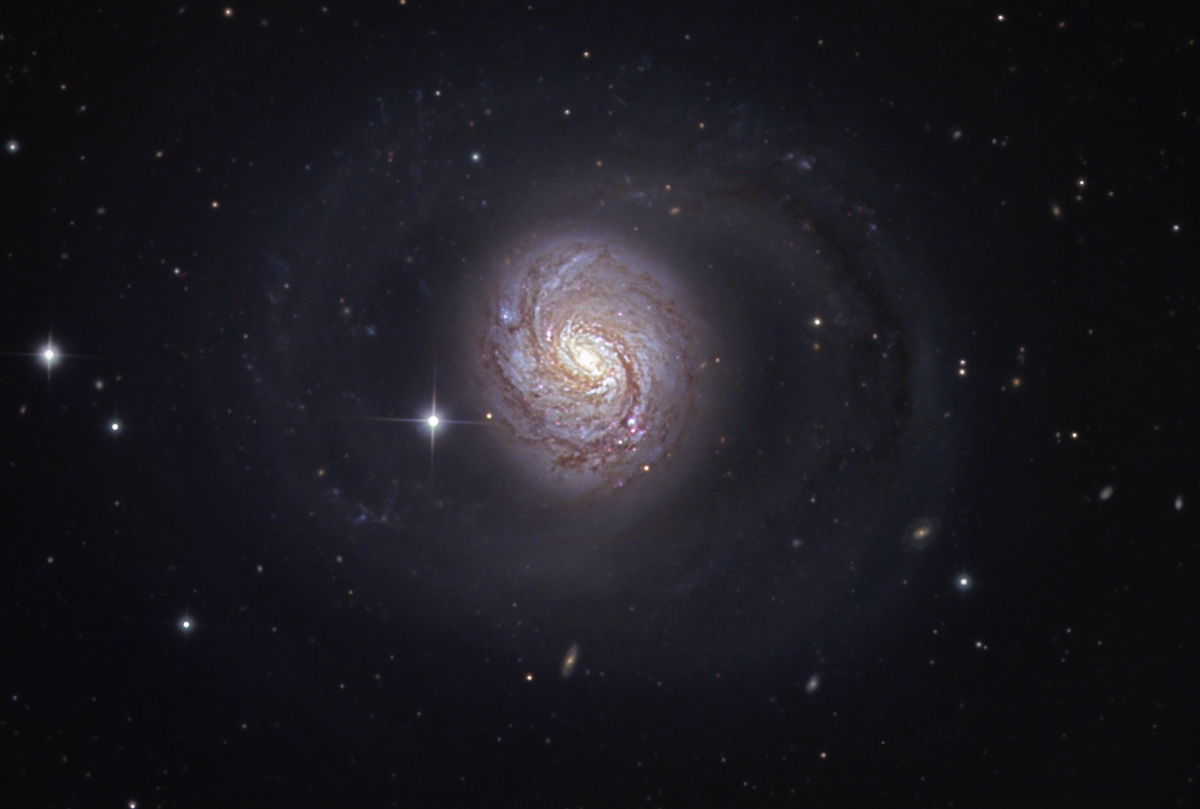
Full Resolution / Volle Auflösung

|
Type Sb/P, distance ~ 18Mpc/60MLy. |
|
60" |
|
(c) 2003 All astro photo images are copyrighted. They may not be used or reproduced without explicit written permission from the authors.
About this Image / Über dieses Bild
| CCD: | ST10 XME |
| Image Type, Orientation: | LRGB Composite, North is up |
| Exposure time: | L: 24x60 sec. 1x1 bin, R,G,B: 6x60 sec.2x2 bin |
| Exposure date: | October 25th/26th, 2003 |
| Location: | Capella Observatory at Amani Lodge, Kupferberg near Windhoek, Namibia |
| Filter: | FR03 + Astronomik Typ II LRGB filters |
| Instrument: | Ganymed 60cm-Hypergraph in secondary focus, f=4800 mm |
| Image seeing (FWHM): | 1.7" |
| Photographer: | Josef Pöpsel |
| Remarks: | M77 is not a very "famous"
object for amateur astronomers . The
reason may be that the visual size is not too big and that M77 can not be
seen very high above the horizon from Europe. The dim outer part, which makes M77 a
"big one"
is just visible on this image. It would make sense to do the shot again with
a longer exposure time.To display the dim and the bright parts of M77 in the
same picture (a Seyfert galaxy), DDP was used. However, among the professionals M77 is very well known. It is the galaxie with the biggest number of papers about it (perhaps except the Andromeda Galaxy). Thanks to Adam Block for this hint. |
| Bemerkungen: | M77 ist ein nicht gerade "berühmtes" Objekt für
Amateurastronomen. Der Grund liegt
wohl in seiner visuellen Größe und der Tatsache, dass M77 von Europa aus
nicht sehr hoch über dem Horizont zu sehen ist. Der schwache Außenbereich,
der M77 zu seiner "wahren Größe" verhilft, ist in dieser Aufnahme
gerade noch zu erkennen. Es macht Sinn, eine deutlich längere Belichtungszeit als
24 min + 3x6 min für dieses Objekt zu benutzen. Um die hellen und die dunklen Bereiche von M77 (einer Seyfert-Galaxie) gleichzeitig darzustellen,
wurde DDP benutzt. Im Gegensatz hierzu ist M77 unter den Profis sehr bekannt: sie ist die Galaxie, über die es die meisten Veröffentlichungen gibt (vielleicht mit Ausnahme der Andromeda-Galaxie). Herzlichen Dank an Adam Block für diesen Hinweis. |
Back to the Galaxies' Overview / Zurück zur Galaxien-Übersichtsseite